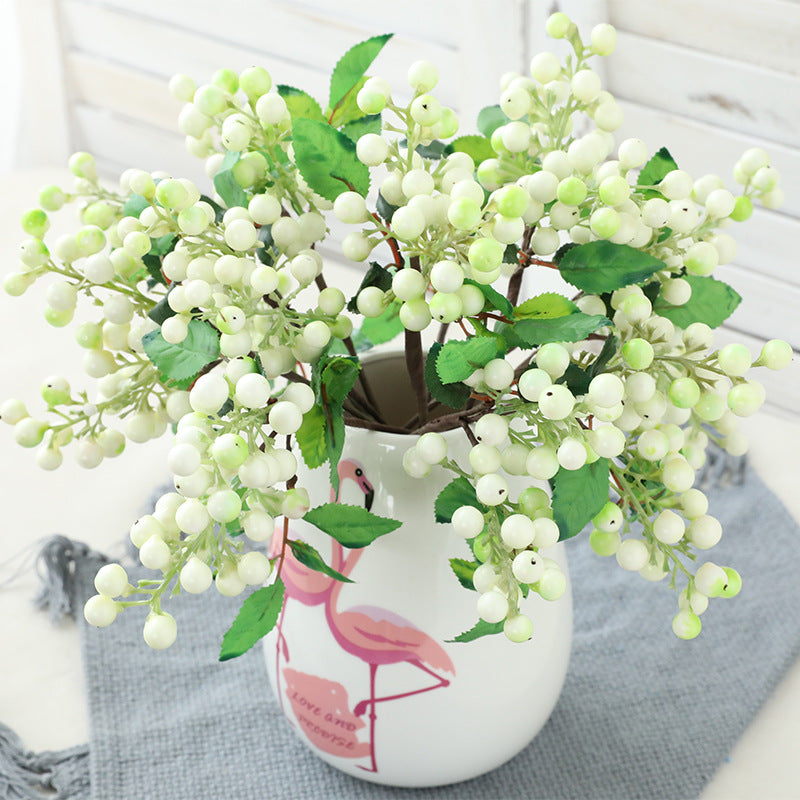Artificial flowers have become a favorite for home decoration because they do not require frequent care, but dust and stains can still make them lose their luster. Mastering the correct cleaning method can not only maintain their realistic beauty but also extend their service life. The following are cleaning tips for different materials and stain levels, which can easily make artificial flowers look brand new.
Daily light cleaning: 1 minute a day to reduce dust accumulation
Most of the time, artificial flowers can be kept clean with simple dusting, especially for materials that are afraid of moisture, such as silk and fabrics:
Dry cloth wiping: Use a soft microfiber cloth (or old stockings) to gently sweep the petals, leaves and stems, wiping along the texture to avoid snagging. This method is suitable for small bouquets or styles with fine decorations (such as sequins and fluff).
Blow dust with a hair dryer on cold air: Set the hair dryer to the cold air setting, blow at an angle about 30 cm away from the bouquet, and use the airflow to remove the floating dust in the gaps. Suitable for large green plants (such as simulated monstera) or arrangements with dense branches and leaves, and be careful to avoid parts that are easy to fall off (such as sticky small flower buds).
Deep cleaning: Dealing with stubborn stains and heavy dust accumulation
If artificial flowers are stained with oil stains, beverage stains, or have not been cleaned for a long time, resulting in dust caking, targeted treatment is required:
Water + neutral detergent (suitable for plastic and PU materials): prepare a basin of warm water, add a small amount of detergent or baby shower gel (mild and non-irritating), use a soft brush to dip the solution and gently brush the stains, then rinse with clean water, and dry upside down (to avoid the flower head drooping and deforming). This method is applicable to simulated roses and plastic succulents made of PU materials, but long-term soaking should be avoided.
Alcohol wiping (suitable for sterilization + removing glue stains): Dip a cotton swab in 75% alcohol and gently wipe the parts stained with glue stains, fingerprints or mildew spots (especially the interface of the flower stem). Alcohol evaporates quickly, is not easy to damage the material, and can also play a disinfecting role.
Baking soda dry cleaning (suitable for fabric and silk materials): Put artificial flowers in a sealed bag, pour in 2-3 spoons of baking soda, tie the bag tightly and shake for 1 minute, take it out and use a soft brush to sweep away the residual powder. Baking soda can absorb grease and odor, and is suitable for silk flowers and wool flowers that should not be exposed to water.
Special material precautions
Artificial flowers of different materials have "cleaning restricted areas", and blind operation may damage the appearance:
Paper and foam materials: Absolutely do not allow water to be exposed, and only dry cotton swabs or soft brushes can be used to remove dust, otherwise it is easy to deform and fade.
With metal accessories (such as wire flower stems): After cleaning, you need to wipe off the water to avoid rust and contamination of petals.
Flocking materials: Do not scrub hard, and use an air blower (for camera lenses) to blow away floating dust to prevent fluff from falling off.
Maintenance after cleaning: Tips to prolong the beauty
Don't rush to put it back in place after cleaning. Doing this step can make the cleaning last longer:
Check the flower shape after drying, and gently adjust the bent petals and leaves to restore the natural shape.
Spray a small amount of anti-static spray on silk and fabric flowers to reduce the speed of dust accumulation in the future.
Place them away from kitchen fumes and air-conditioning outlets to reduce stains from the source.
Regular cleaning is not only for beauty, but also for "maintenance" of artificial flowers. Choose the right method according to the material, and do simple maintenance 1-2 times a month to keep these "eternal flowers" fresh and fresh, and continue to inject vitality into the space.

